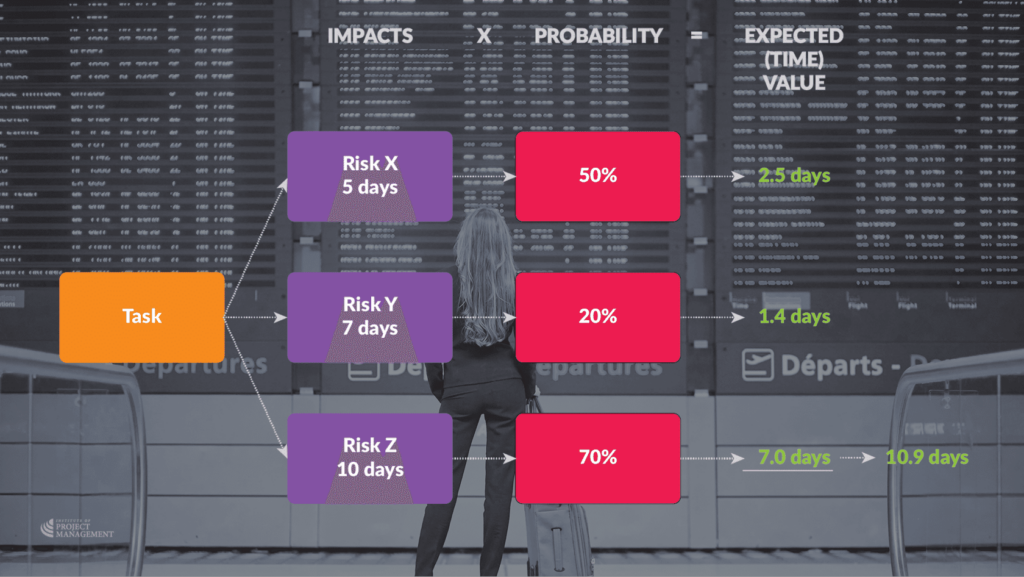7.11 Contingency reserves
How much contingency is enough?
In the last topic, we quickly dismissed expected monetary value as a method for calculating task-level contingency reserves.
However, once you set your threshold, review your medium-level risks, and apply a time, cost, or scope contingency to each, you may end up inflating your budget alone by twice as much again (or even more)!
For example, in one project you might have a contingency of 5 days for Risk X, 7 days for Risk Y, and 10 days for Risk Z.
Do you really need to set aside a float of 22 days for all these uncertain events?
What if further analysis revealed…
- …there is a 50% chance we will need the extra 5 days for Risk X
- …there is a 20% chance we will need the extra 7 days for Risk Y, and
- …there is a 70% chance we will need the extra 10 days for Risk Z.
EMV redeemed

Over multiple tasks or projects, the total amount we actually need to reserve can be forecast using expected monetary value (EMV).
Calculating the EMV for each risk event and summing the results reveals that we only need to allocate a contingency of 10.9 days to this project.
This is because if we hypothetically delivered the exact same project 1,000 times, you might expect that some projects will need the full 22 days and others will need none.
On average, though, we’d expect to use 10.9 days – assuming our probability and impact estimates are accurate!
This reserve required can also be calculated using Monte Carlo analysis
And if, in the short term, we need more time or money – that is what our management reserve is for.
